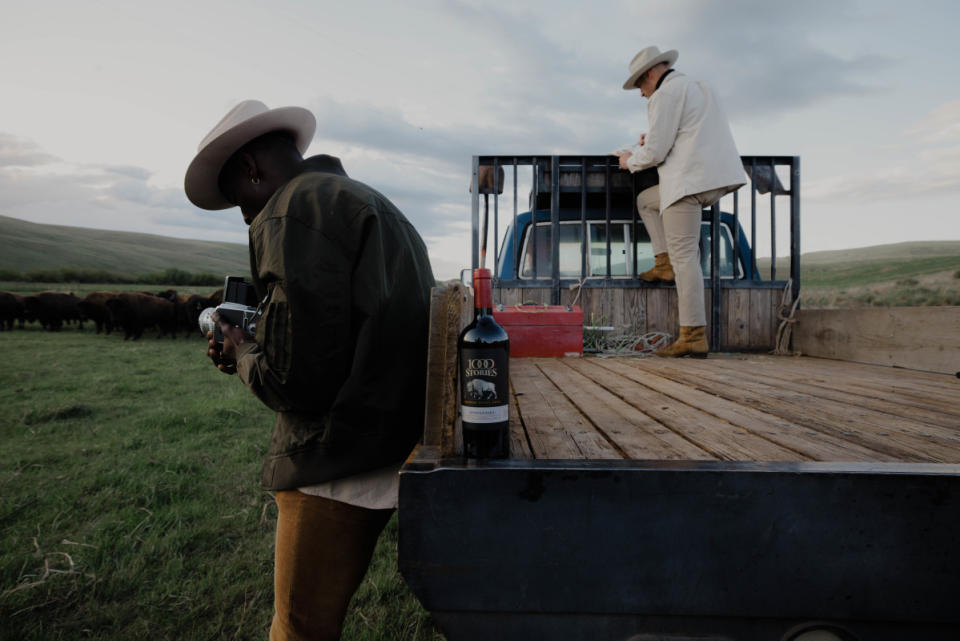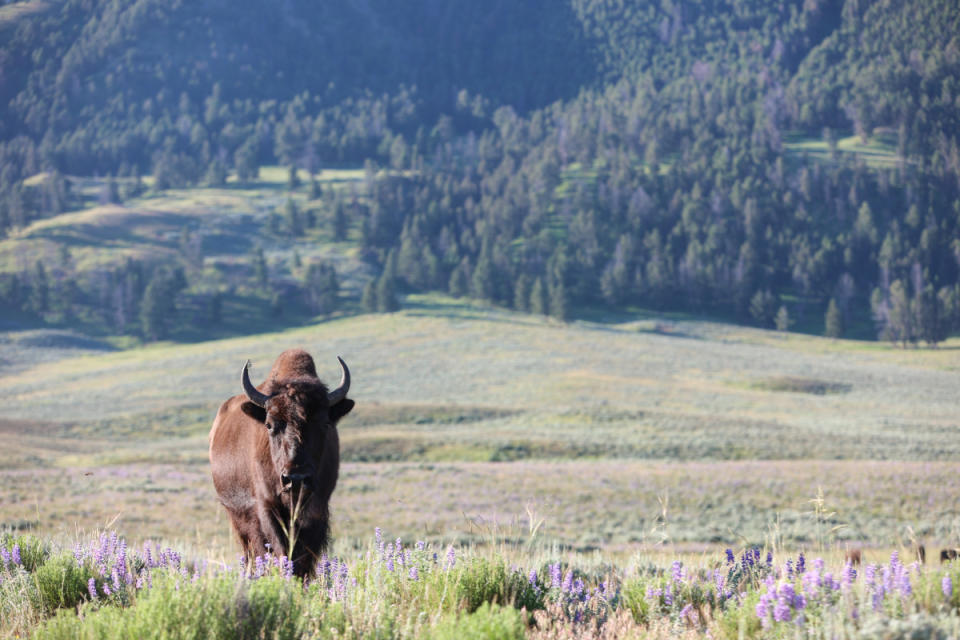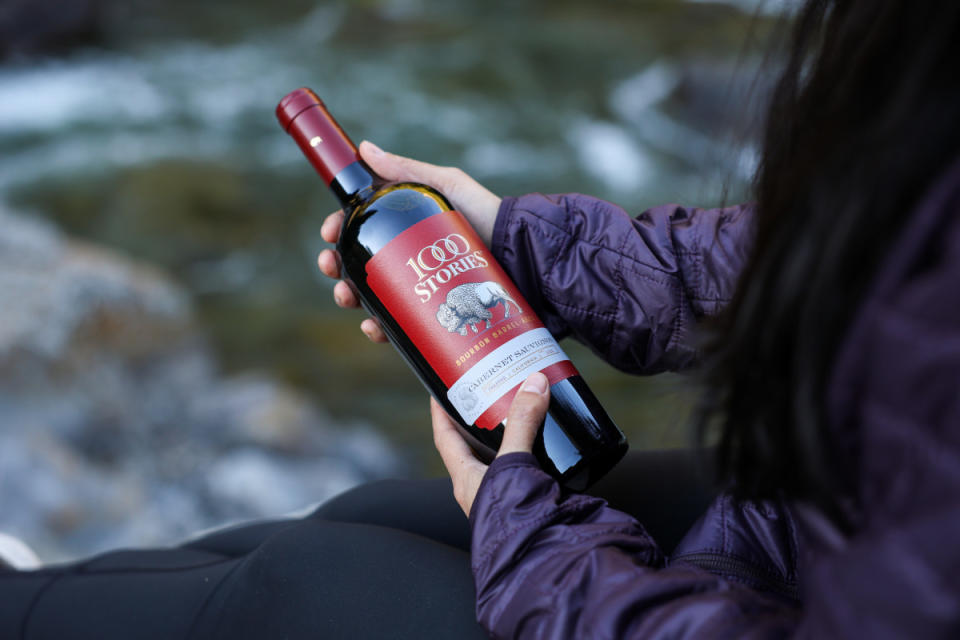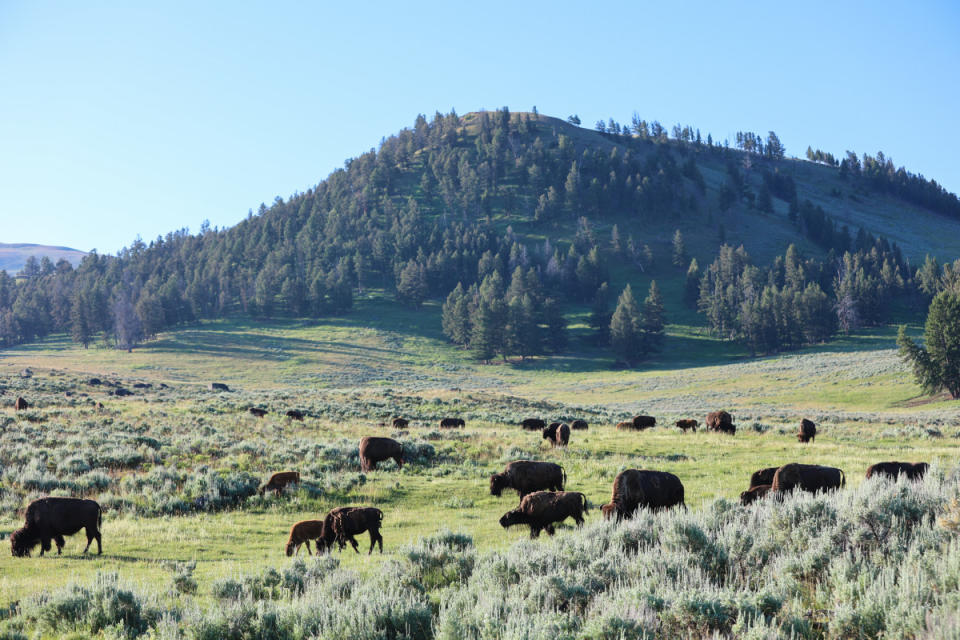How Wine Brand 1000 Stories is Helping Restore America’s Bison Population
1000 Stories, a unique wine brand based in California, has a bison emblazoned on its label: a powerful symbol of American spirit, strength, and resilience. It is a fitting representation not only of the boldness of the wine within the bottles, but of the greater mission of the brand. As a B Corp certified winery, one of only a handful in the American wine landscape, in 2023, 1000 Stories became a corporate sponsor of Yellowstone Forever’s efforts to help conserve America’s bison population through its newly christened Bison Conservation and Transfer Program.
The partnership is one that demonstrates the way in which wine brands can creatively find synergy with organizations that have a meaningful, regenerative impact that goes well beyond the wine industry. “Everything that we do is really tied to being a force for good,” says Tiffany Tran, Director of Marketing for 1000 Stories. “We don't want to just create wines, we want to create stories, and do good for both people and the environment.”

Courtesy of 1000 Stories
1000 Stories was founded in 2014 with an original point-of-view: to make California wine using repurposed bourbon barrels as part of the aging process, creating bold but elegant wines that had a true mark of American ingenuity built into their very DNA. “It’s a lot of trial and error,” says Margaret Leonardi, one of the winemakers for 1000 Stories, of the persistence and precision required to craft balanced wines that have a component of bourbon barrel-aging in the blend.
“The bourbon barrels really add a lot of caramel and toffee,” says Sebastian Donoso, another winemaker for the brand. “But also sometimes you get a little bit of that dried herb component, which is really, really interesting,” he says, though it’s a careful process to make a finished wine whose personality is enhanced by bourbon, not defined by it. “We've made a decision that we want it to be a wine first,” he says. “It needs to be a wine that is accentuated with all these beautiful characteristics that bourbon barrels have to offer.” 1000 Stories now offers three bourbon barrel-aged wines: a Zinfandel, Cabernet Sauvignon, and Red Blend.

Courtesy of 1000 Stories
While 1000 Stories was the first California winery to bring bourbon barrel-aged wines to market, having pioneered the practice, other wineries were quick to follow suit. Also on a theme of pioneering and leadership, the brand was also the first within its parent company, Concha y Toro to pursue B Corp certification, which eventually led to the entire Concho y Toro profile becoming B Corp certified, making it one of, if not the largest wine organization worldwide to be so. “It is a wonderful example of our organization really playing an influence on our mother company and getting them part of that journey as well,” says Tran, of the impact even a small organization can have in leading the charge for better sustainability and responsibility practices globally.
B Corp, or Benefit Corporation status is a next generation sustainability certification that asks companies not only to stringently consider their impact on the environment, but also on every aspect of their business, including the human component, and also challenges them to look beyond their own industry in order to serve a broader global good.

Courtesy of 1000 Stories
Which is how 1000 Stories found the perfect pairing with Yellowstone Forever, bringing their ethos of impactfulness, along with their bison imagery, to the support of actual American bison.
Having once roamed the United States by the millions, by the early 1900s the number of bison in this country had dwindled to mere dozens, following a mass slaughter by European settlers that aimed to make land available for American cattle ranchers, displacing Native American tribes in the process. (For additional context, Ken Burns’ recent documentary, “The American Buffalo,” covers the plight of bison in the U.S. — to begin with, settlers mistakenly identified bison as “buffalo,” and the name stuck.)
Now numbering in the low thousands, most bison in this country inhabit Yellowstone National Park, and Yellowstone Forever’s conservation efforts aim to increase that number further. If the term “brucellosis” already has any meaning for you, chances are you’re a devotee of the TV show “Yellowstone,” which illuminated the issue, but it’s one of the major hurdles in restoring the bison population. A disease born of intermingling between wild bison and domesticated cattle, brucellosis causes major reproductive issues in animals, which the USDA reports can affect up to 50% of the bison population in Yellowstone.

Courtesy of 1000 Stories
Until recently, the only course of action for brucellosis-infected animals was euthanization, to prevent further spread among their herds, but Yellowstone recently opened a facility that allows for quarantine and treatment of affected bison, a process that can take up to three years. Once animals are effectively rid of brucellosis, working in partnership with the Intertribal Buffalo Council, they are moved out of Yellowstone National Park, and repatriated to Native American tribal lands.
I was fortunate to witness the ribbon cutting ceremony for the Bison Transfer Facility this summer, where 1000 Stories was on hand to assist with the celebration. “As an organization, 1000 Stories is challenging ourselves to foster those kinds of impacts,” says Tran, also fitting for a brand named for the practice of telling stories, of which this one was an epic, in my opinion. To say that this moment was emotional and powerful would be an understatement of a bison-sized degree. “Whatever we can do to make it right and make it better feels good,” says Donoso. “So I'm personally really glad to have found this partnership, which is a perfect fit for the brand.”
Leaders from various Northwestern Native American tribes spoke in succession about the importance of bison to their very identities, frequently referring to them as their brothers and sisters, so intertwined are they in America’s history, and so important are the efforts of Yellowstone Forever, with financial support from 1000 Stories, to return them to where they belong. While the ribbon was cut by various leaders not only from these tribes, but also Yellowstone National Park and the Department of the Interior, I found myself moved to tears.

